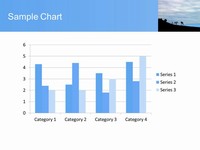

From June 22 to 24, watch as the gibbous moon pays a visit to Jupiter about halfway up the southern sky after your local nightfall. The largest planet in the solar system will dominate the nights for a few weeks in June, leading up to a meeting with Earth’s lone natural satellite.


From solstice date onward, northern days start getting shorter, while the opposite occurs in the Southern Hemisphere. On the first day of the new season and for a few days afterward, the sun appears to rise from the same place on the horizon-hence the origin of the word “solstice,” which means “sun stands still” in Latin. Locations south of the Equator are thus tilted away from the sun, bringing shorter days and colder temperatures. During northern summer, that side of the planet is tilted more toward the sun and experiences longer days and warmer temperatures. Seasons happen because Earth is slightly tilted on its axis, so different halves of the planet are closer or farther from the sun over the course of a year. For the Southern Hemisphere, the day marks the start of winter. UK time (06:07 ET) on June 21, with the arrival of the summer solstice. Summer officially begins in the Northern Hemisphere at 11:07 a.m. And with a larger telescope with at least a 10-inch mirror, keen-eyed observers may be able to see Vesta’s irregular shape and even spot hints of surface colours ranging from yellow to pink. Planetarium All-sky charts Sky rotation diagram Star atlas The solar system 3D Moon map Object-finder charts Rising & setting times Live twilight map World. If you have a telescope, you can watch the asteroid sail across the background of stars in the northwestern part of the bright constellation Sagittarius, the archer. While you can easily track it down with binoculars, it will also be possible to catch Vesta with the naked eye from a dark location far away from city lights. Lucky for sky-watchers, the bright planet Saturn will act as a guide for finding Vesta, as it will be only a few degrees below the asteroid. The space rock measures 326 miles across and will be about 106 million miles from Earth on this night. The second largest body in the asteroid belt officially reaches opposition on the 19th, which means it will sit opposite to the sun in the sky and will be at its biggest and brightest for the entire year.


 0 kommentar(er)
0 kommentar(er)
